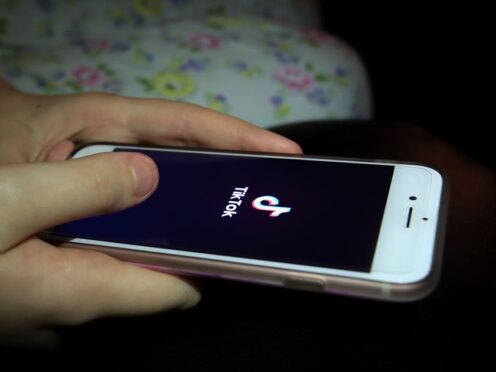
TikTok has launched its global council of young people to advise the social media giant on how to make the platform safer by design.
The video sharing platform said the Youth Council, consisting of 15 teenagers from around the world – including the UK – has met twice since December, including once with TikTok chief executive Shou Chew.
The group has said its priorities for 2024 will see it focus on the wellbeing and inclusion of teenagers to help ensure TikTok is a safe and accessible place for young people.
At its most recent meeting, which TikTok confirmed took place in February, the council provided input into a redesign of the platform’s Youth Portal, an online help centre for younger TikTok users, and requested more information from the company on how the reporting and blocking processes are carried out on the app.
Social media platforms are facing ongoing scrutiny and new regulation over online safety, particularly when it comes to younger users.
The Online Safety Act, which passed into law last year, requires firms to protect users, and in particular children, from online harms that appear on their platforms, with large fines possible for firms found to be in breach.
Val Richey, global head of outreach and partnerships in trust and safety at TikTok, said: “Listening to feedback from teens and parents is a huge part of our safety work at TikTok.
“We want to empower families to experience the joy of our platform, by making meaningful changes based on their feedback and by equipping them with tools such as Family Pairing.”
The announcement of the council’s first meetings comes as new research conducted by YouGov and Internet Matters found teenagers would like more opportunities to work alongside social media platforms.
The global study of more than 12,000 teenagers and parents found that just under half (49%) of UK teenagers said they only spoke to their parents about their social media use once a month or less.
UK parents were also identified as among the least frequent users of the online parental tools made available to them to manage online safety – only 33% said they used them compared with 40% of parents in the US.
Carolyn Bunting, co-chief executive of Internet Matters, said: “When it comes to ensuring children feel safe and well online, it is incredibly important that we listen and respond to their lived experiences, that’s why we are pleased that TikTok is putting their Global Youth Council at the heart of their trust and safety programme.
“The Youth Council’s input will be critical in ensuring TikTok can respond effectively to their needs and concerns when using the platform.
“The research also confirms that there is much more that can be done to help both parents and teens make the most of the existing controls and settings that are available.
“These are vital tools that parents can use to support young people along with playing an active role in their children’s digital lives.
“We are pleased that TikTok will be both making this a focus of their in-app messaging and doing more to promote media literacy in the UK.”

Enjoy the convenience of having The Sunday Post delivered as a digital ePaper straight to your smartphone, tablet or computer.
Subscribe for only £5.49 a month and enjoy all the benefits of the printed paper as a digital replica.
Subscribe